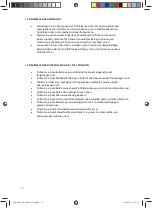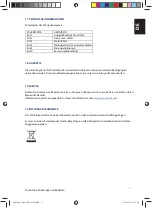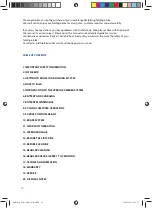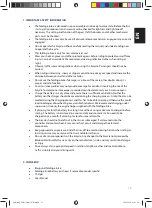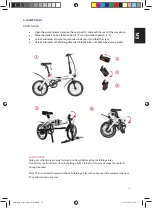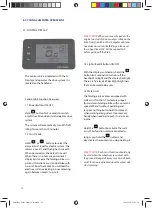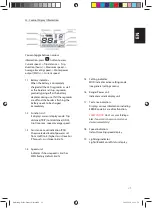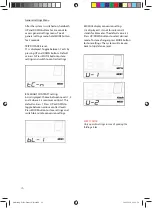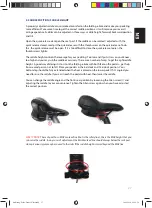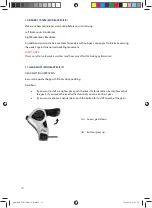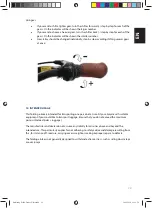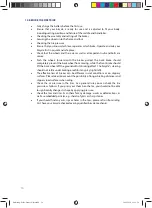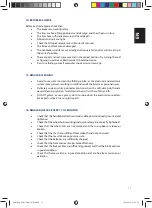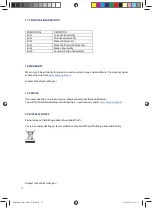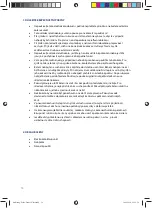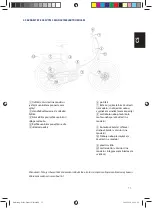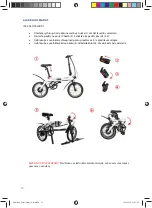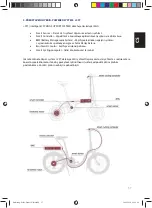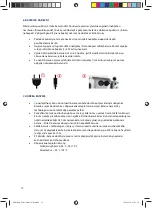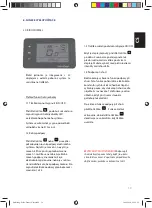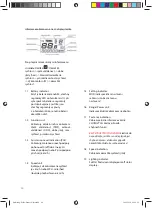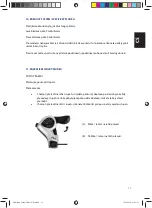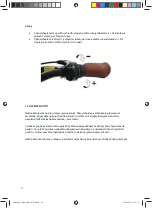
30
13. BEFORE THE FIRST RIDE
Fully charge the battery before the first use.
Ensure that your bicycle is ready for use and is adjusted to fit your body,
including setting position and fixture of the saddle and handlebar.
Checking the assembly and settings of the brakes
Securing the wheels into the frame and fork
Checking the tire pressure
Ensure that you know which lever operates which brake. Operate and ride your
bicycle first in a quiet and safe place.
Check that the wheels and thru axles as well as all important nuts and bolts are
secure
Push the wheels forward with the brakes pulled. The back brake should
completely prevent the back wheel from moving, while the front brake should
lift the back wheel off the ground with its braking effect. The bicycle’s steering
should not rattle under braking or exhibit any play.(right/left).
The effectiveness of brakes can be different in wet conditions or on slippery
surfaces. Please take into account the possibility of longer braking distances and
slippery road surfaces when riding.
Check the air pressure in the tires. As a general rule you can check the tire
pressure as follows: If you press your thumb on the tire, you should not be able
to significantly change its shape by applying pressure.
Check the tires and rims. Scan them for any damage, cracks or deformations, as
well as embedded particles, e.g. shards of glass or sharp stones.
If you should find any cuts, rips or holes in the tires, please refrain from riding.
First have your bicycle checked over by qualified bicycle mechanics.
14. BEFORE EACH RIDE
Before each ride, please check that:
The brakes are working safely.
The tires are free of foreign objects and damage, and the wheels run true.
The tires have sufficient pressure and tread depth.
All bolts and nuts are tight.
Check that all quick releases are still correctly secured.
The frame and fork are not damaged.
The handlebar and stem are correctly and securely fastened as well as set up in
the correct position.
The seat post and seat are secure and in the correct position. Try turning the seat
or tipping it upwards or downwards. It should not move.
Don’t use folding e-bike if computer shows an error message
15. REGULAR CLEANING
Avoid to use water to clean the folding e-bike, as the electrical and electronic
systems may get wet, resulting in malfunction of the bicycle or personal injury.
Delicately wipe any dirty painted or plastic parts with a soft, damp cloth and a
neutral cleaning solution. Carefully dry the parts with a soft, dry cloth.
DO NOT grease or use a greasy cloth to wipe down the electrical connectors,
brake pads, wheels, tires or plastic parts.
16. REGULAR CHECKS (EVERY 1 TO 2 MONTHS)
Check that the handlebar attachment and saddle post are correctly inserted and
tightened.
Check that the wheel hub mounting and quick-release are correctly tightened.
Check that the wheel rims are not cracked and that no spokes are loose or
broken.
Check that the tires have sufficient thread depth and not punctured.
Check that the tires do have correct pressure.
Check that the batteries are sufficiently charged.
Check that the front and rear brakes brake effectively.
Check that the brake cables are sufficiently greased, and that the brake pads are
in good condition.
Check that frame welds are in good condition and are free from corrosion or
oxidation.
Anleitung-Frida-Franzi-Clara.indd 30
24.06.2020 09:11:59

